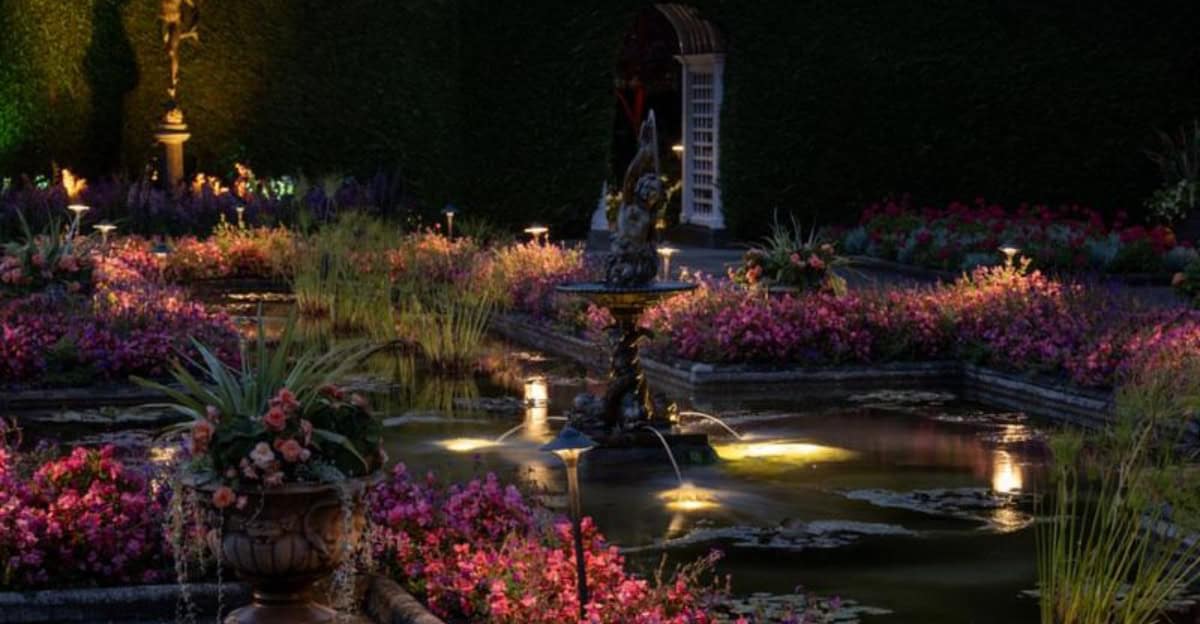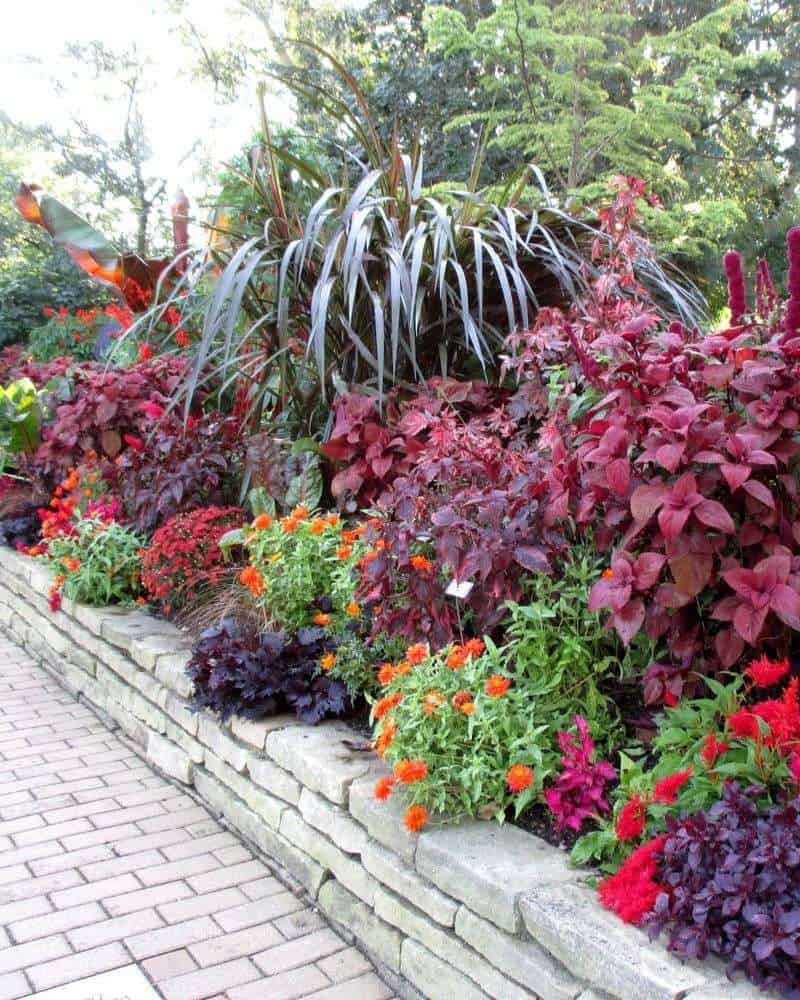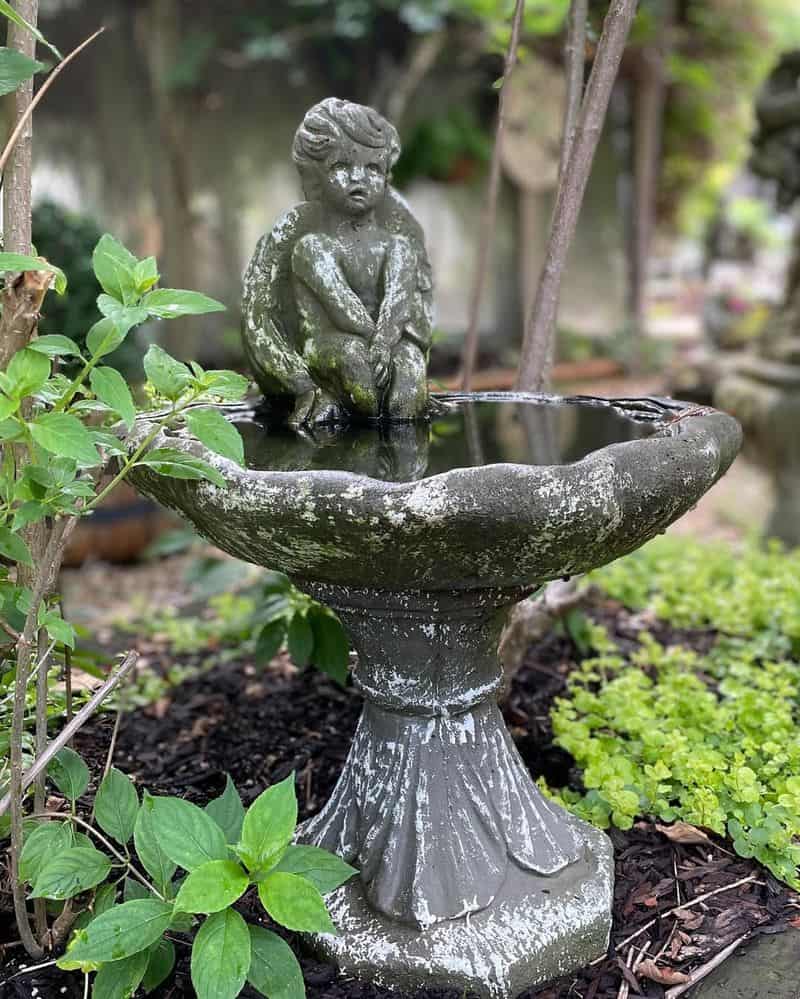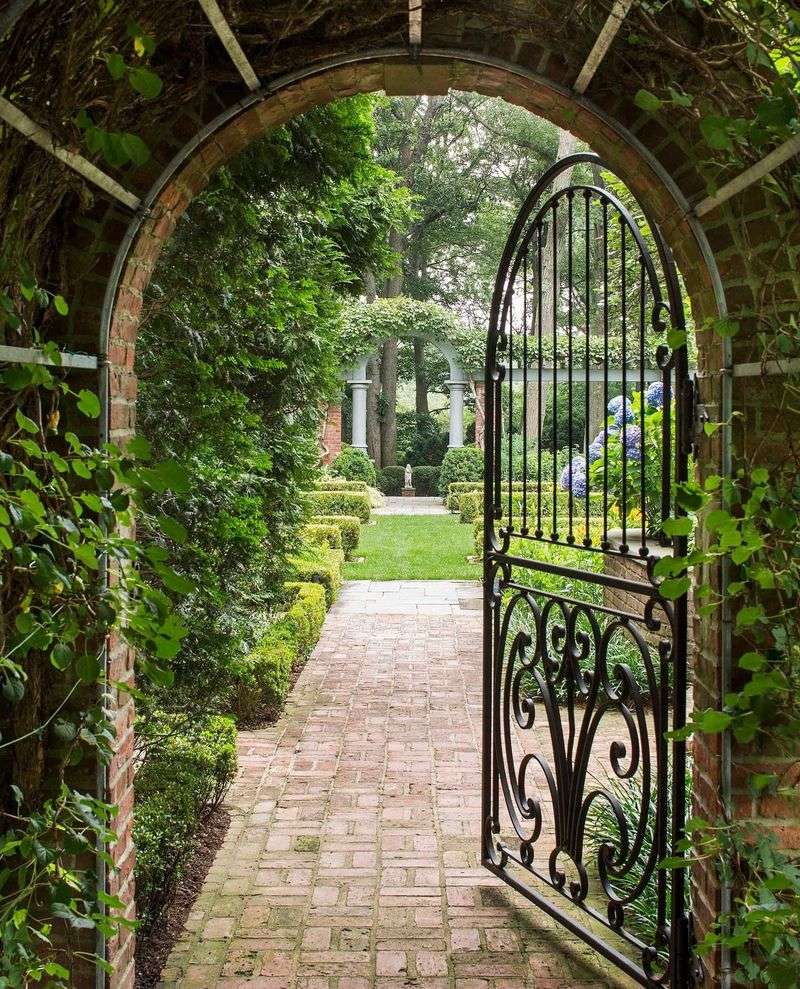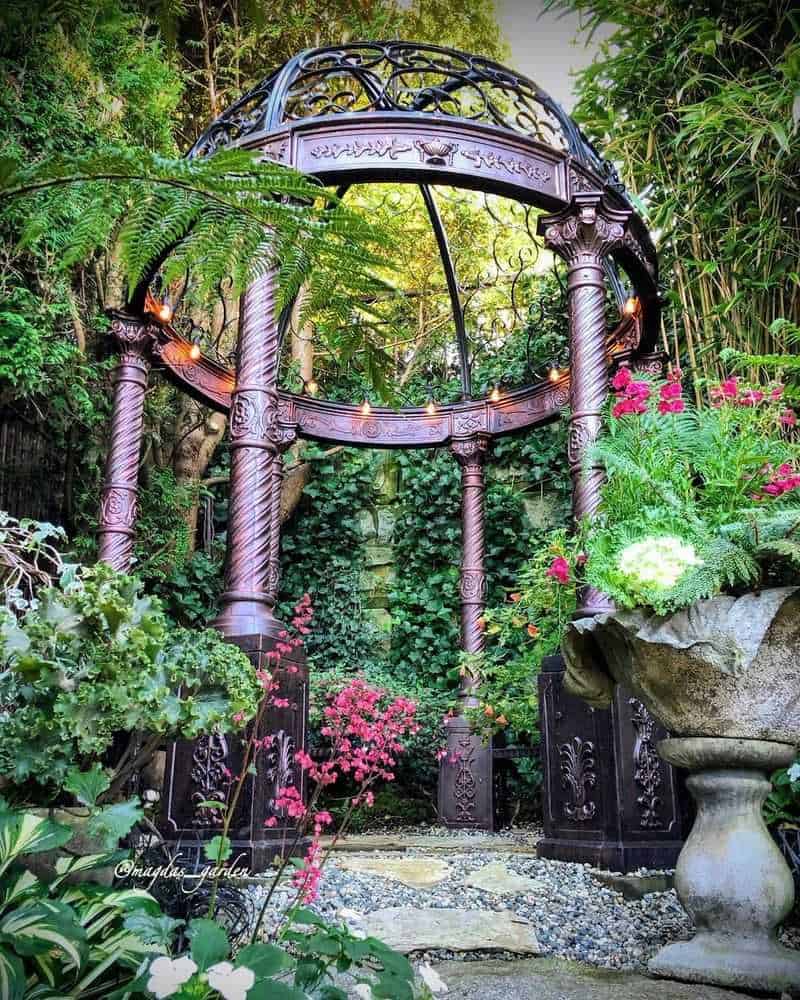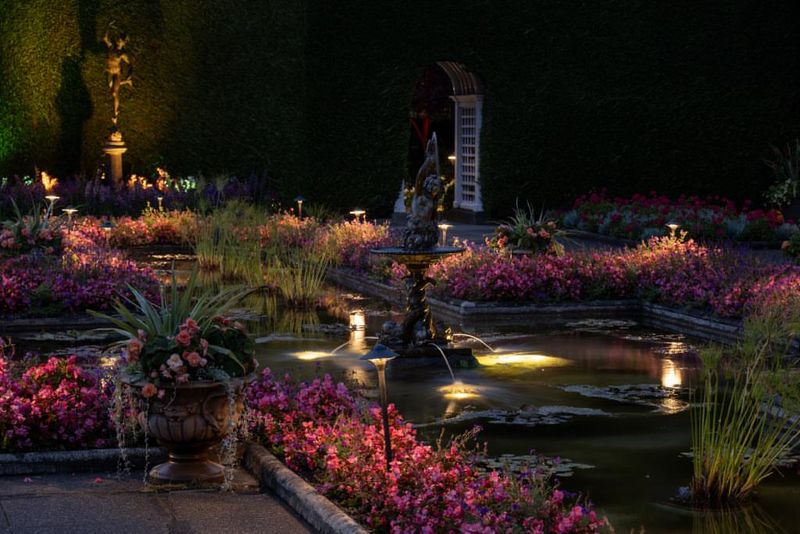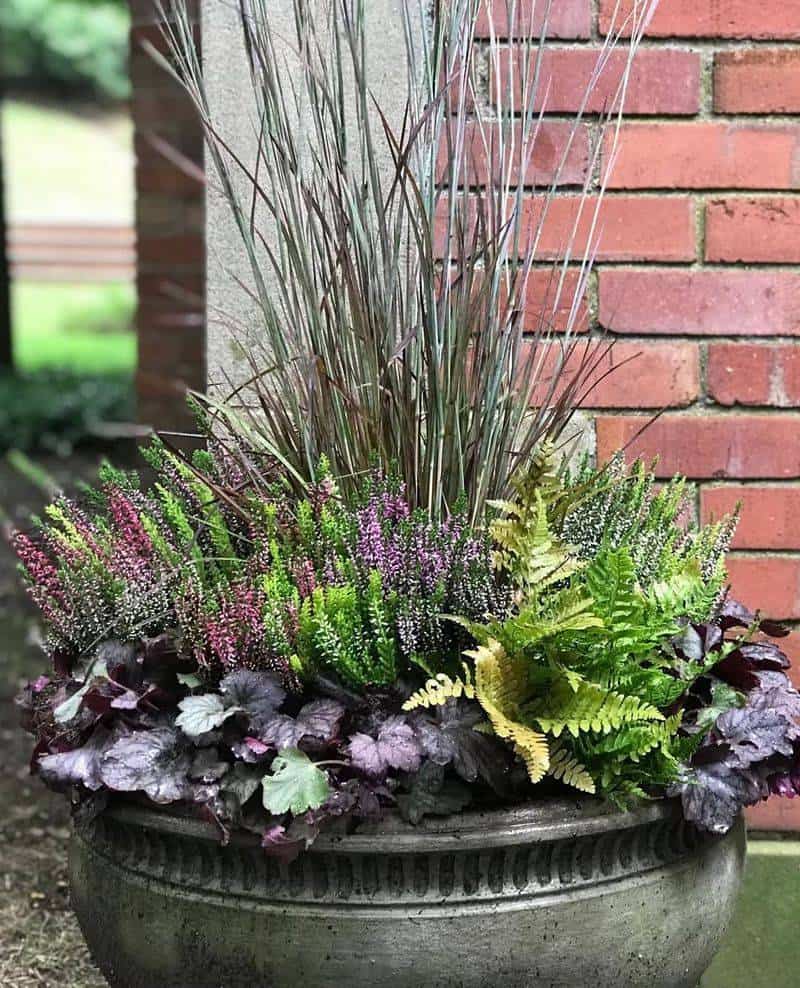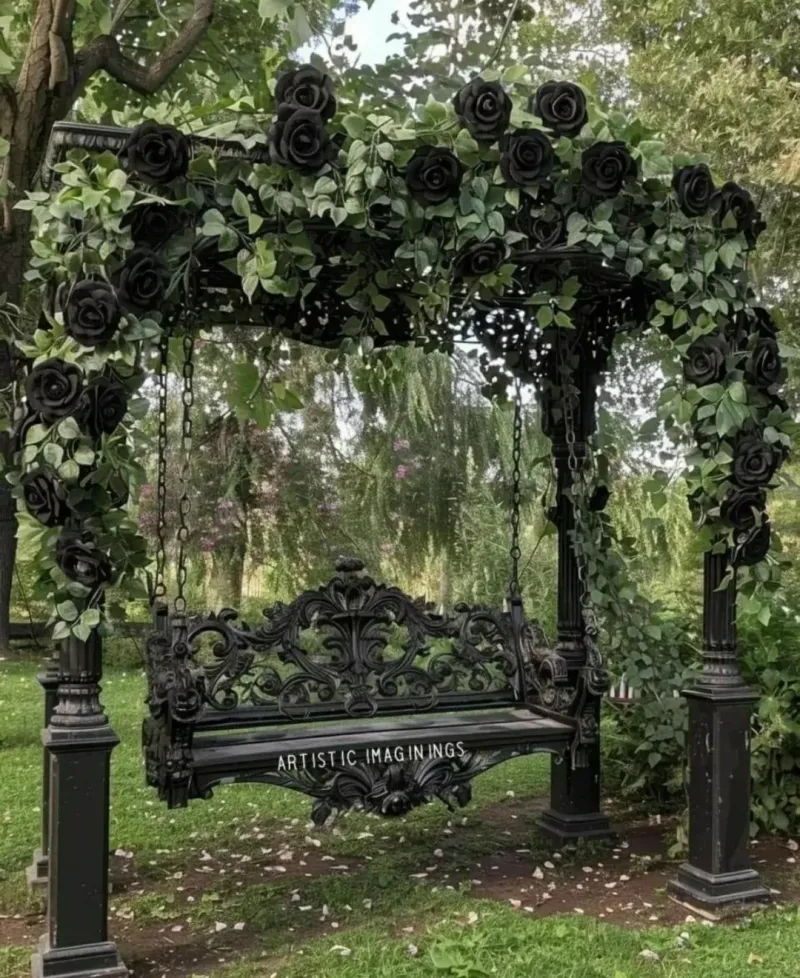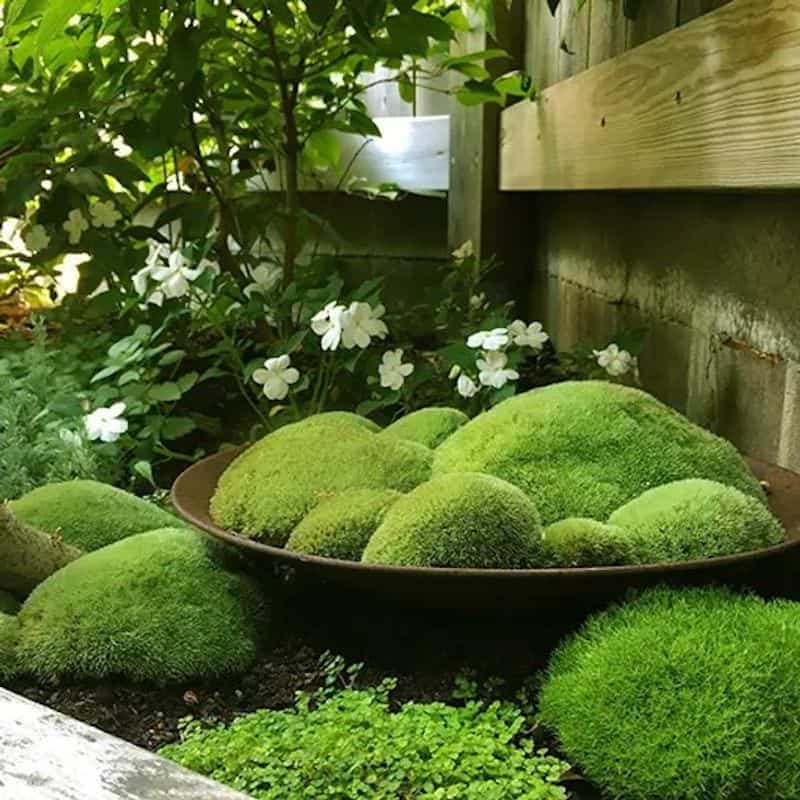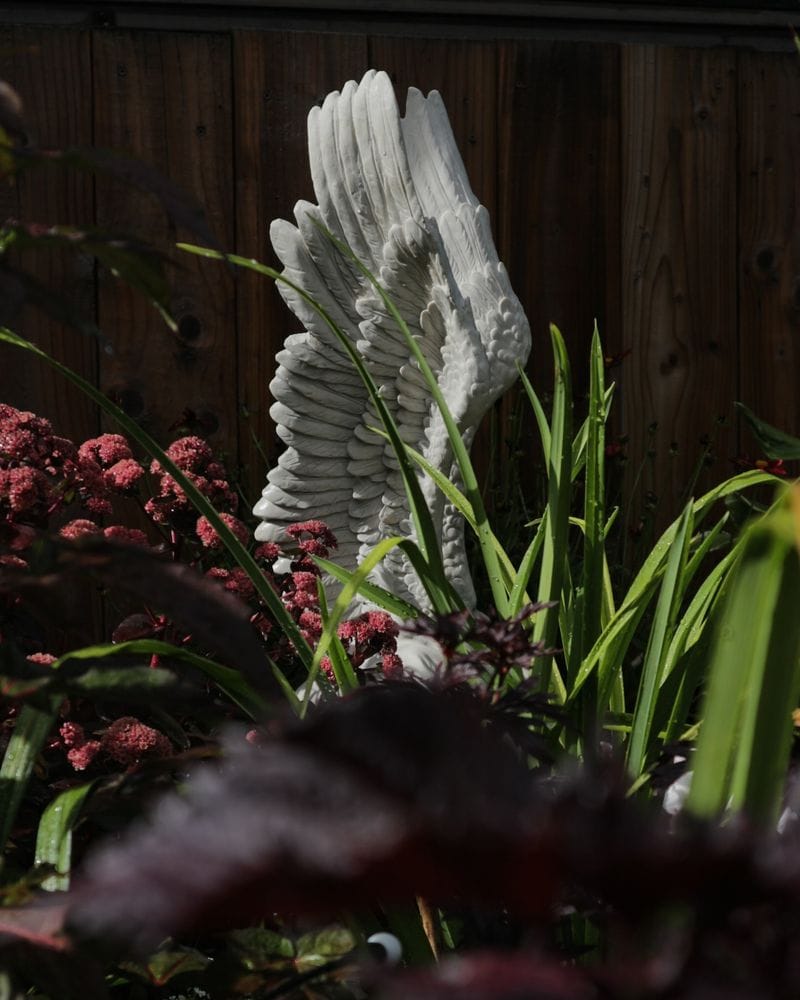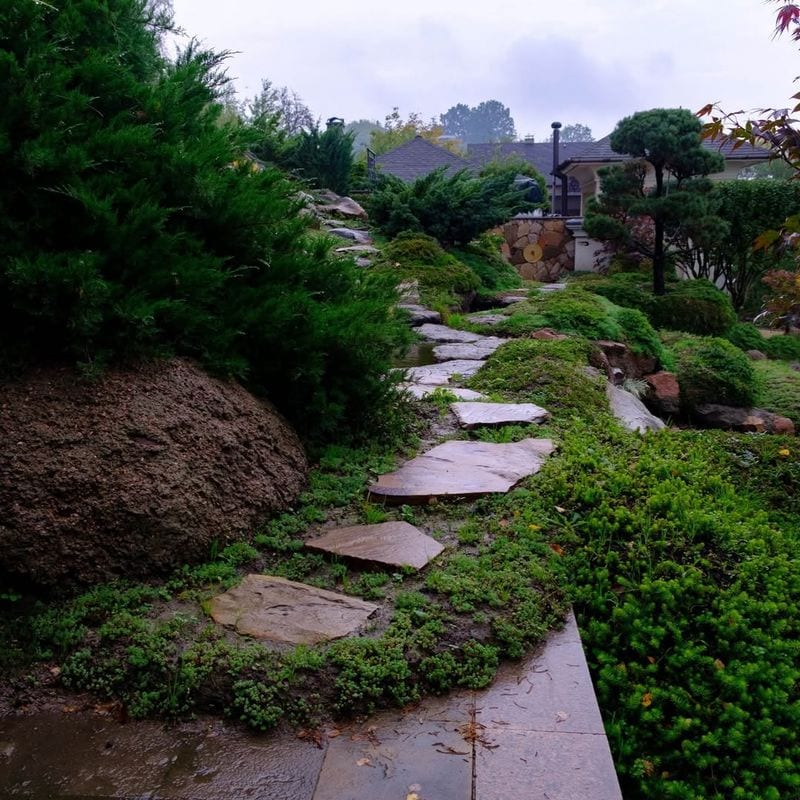Creating a gothic garden that is both eerily stunning and charmingly captivating can transform your outdoor space into a mysterious retreat.
With a careful selection of dark-hued plants, Victorian statues, and other gothic elements, you can craft a landscape that’s as enchanting as it is spooky.
Read on to discover 10 unique ideas that will breathe life—or perhaps ghostly whispers—into your gothic garden.
1. Incorporate Dark-Hued Plants
Dark-hued plants are the backbone of any gothic garden.
Picture this: velvety black flowers that seem to whisper in the wind, deep purples that add a mysterious allure, and dark green foliage that creates shadowy corners.
These plants aren’t just about color; they add depth and texture, making your garden a landscape of intrigue. Combining them with lighter accents can create a striking contrast.
Did you know that many of these plants are not only beautiful but also hardy? They thrive in various conditions, adding both beauty and resilience to your outdoor space.
2. Add Victorian Statues
Adding Victorian statues can elevate the eerie charm of your gothic garden. Imagine a stone angel, wings spread wide, shrouded in creeping ivy.
These statues evoke a sense of history and mystery, transforming your garden into a timeless sanctuary.
They can be strategically placed to catch the moonlight, creating ghostly silhouettes that dance across the garden.
Whether it’s a somber angel or a regal figure, these statues captivate the imagination. They’re not just decorations; they’re storytellers, whispering secrets of bygone eras to those who wander by.
3. Utilize Wrought Iron Elements
Wrought iron elements bring an undeniable gothic flair to your garden. Think ornate gates that creak open with the breeze, leading into a world of shadow and light.
Fences with intricate designs that cast eerie shadows, crafting an atmosphere of mystery.
These elements aren’t just for aesthetics; they offer structure and definition, guiding visitors through your gothic landscape.
Historically, wrought iron has been used for centuries to adorn gardens, adding a touch of elegance and security. Embrace its timeless appeal to create a garden as captivating as a forgotten castle.
4. Create Secluded Garden Nooks
Secluded garden nooks are perfect for introspection and secretive conversations. Imagine a hidden corner shaded by lush greenery, where time seems to stand still.
A cozy bench invites you to sit and ponder life’s mysteries, enveloped by the whispers of the wind.
These nooks offer solitude, away from the world’s chaos, making them ideal for meditation or simply soaking up the garden’s eerie beauty.
By using natural elements like tall shrubs and winding paths, you can craft intimate spaces that invite exploration, curiosity, and perhaps, a touch of magic.
5. Install Gothic Lighting
Gothic lighting can transform your garden into an ethereal landscape. Picture lanterns casting their warm glow along winding paths, illuminating statues and plants with a soft, haunting light.
These lights create an atmosphere reminiscent of a forgotten tale, where shadows dance and flicker.
By placing lights strategically, you can highlight specific features, adding depth and dimension to your garden.
Did you know that solar-powered options are available, blending modern convenience with gothic aesthetics? Let your garden shine with a mysterious allure long after the sun sets.
6. Employ Aged Planters and Containers
Aged planters and containers add character and history to your garden. Imagine stone pots with a patina of age, adorned with moss that hints at untold stories.
These containers aren’t just vessels for plants; they’re art pieces that contribute to the garden’s narrative. By choosing weathered materials like stone or cast iron, you can enhance the gothic theme.
These planters provide not only function but also form, standing as silent sentinels that guard your garden’s secrets. They’re a testament to the enduring beauty of the past, woven into the present.
7. Incorporate Dark-Colored Garden Furniture
Dark-colored garden furniture adds a touch of elegance and mystery to your gothic garden.
Picture wrought iron chairs with intricate designs, or a wooden bench painted in deep hues, inviting you to sit and soak in the surroundings.
These pieces don’t just provide seating; they contribute to the garden’s overall ambiance. By selecting furniture in colors like black, dark green, or deep purple, you create cohesion with the garden’s theme.
They’re not just functional; they’re a part of the story, offering comfort amidst the shadows and whispers of the garden.
8. Use Creeping Vines and Moss
Creeping vines and moss bring an ancient, mystical feel to your gothic garden. Envision walls draped in lush green tendrils, as if nature herself is reclaiming the space.
These plants are living tapestries, weaving stories of forgotten times. They soften hard lines, creating a sense of timelessness and blending the man-made with the natural.
Vines can climb trellises or frame doorways, while moss carpets stones with a velvet touch.
Together, they craft an environment where the past and present merge, inviting you to wander through a world where the ordinary becomes extraordinary.
9. Add Eerie Sculptures and Ornaments
Eerie sculptures and ornaments lend an air of mystery and intrigue to your gothic garden. Imagine a stone gargoyle perched ominously, or a twisted metal sculpture that catches the moonlight.
These pieces are more than decorations; they’re storytellers, whispering tales of the past to those who dare to listen. By strategically placing these ornaments, you create focal points that captivate and unsettle.
Whether they evoke fear, wonder, or curiosity, these sculptures turn your garden into a living storybook, where each visitor becomes a part of the narrative.
10. Design Winding Pathways
Winding pathways are the veins of your gothic garden, leading visitors through a landscape of shadows and light. Picture a path that twists and turns, inviting you to explore hidden corners and secret spaces.
These pathways aren’t just functional; they add an element of surprise and discovery. By using materials like cobblestones or gravel, you create a tactile experience that complements the garden’s aesthetic.
Did you know that pathways can also guide the eye, highlighting specific features and creating a sense of flow? They’re the threads that weave the garden into a cohesive, enchanting whole.

